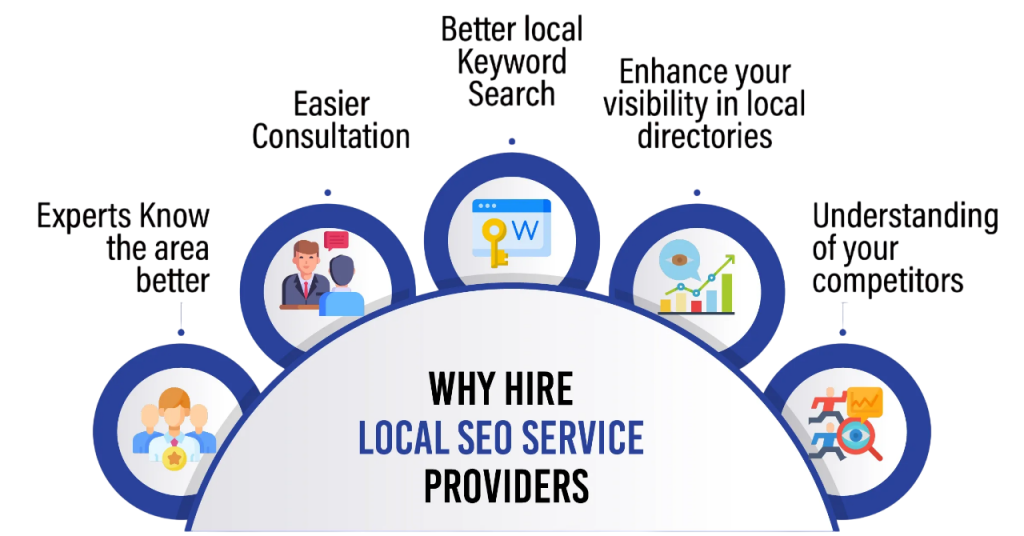
- Definition and Importance
- Types of SEO (On-page, Off-page, Technical)
- Keywords and Search Intent
- Meta Tags and Descriptions
- Site Structure and URLs
- Mobile Optimization
- Page Speed Optimization
- Backlinks and Link Building
- SEO Tools Overview
- Local SEO
- Future of SEO
- Conclusion
Definition and Importance
Search Engine Optimization (SEO) is the process of optimizing websites to improve their visibility on search engine results pages (SERPs), primarily on platforms like Google, Bing, and Yahoo. When done correctly, SEO helps drive organic (non-paid) traffic to a website, increases brand exposure, and boosts overall business success. In today’s digital landscape, where competition is intense and user attention is fleeting, being visible on search engines can make the difference between business growth and stagnation an essential truth emphasized in Digital Marketing Training, where learners master keyword optimization, technical audits, and content alignment to improve visibility, attract qualified traffic, and sustain long-term growth through organic search strategies. The core idea of Search Engine Optimization revolves around understanding what users are searching for online, the words they’re using, and the type of content they wish to consume. Search Engine Optimization not only helps businesses connect with their audience but also enhances user experience by offering relevant and useful content.
Ready to Get Certified in Digital Marketing? Explore the Program Now Digital Marketing Online Training Offered By ACTE Right Now!
Types of SEO (On-page, Off-page, Technical)
Search Engine Optimization can be broadly categorized into three main types: on-page SEO, off-page SEO, and technical SEO core pillars often leveraged by Social Media Influencers to boost discoverability, authority, and platform performance. On-page SEO focuses on optimizing content and metadata, off-page SEO builds credibility through backlinks and brand mentions, while technical SEO ensures fast-loading, crawlable, and mobile-friendly experiences that enhance visibility across search engines and social platforms.
- On-page SEO: Involves optimizing individual pages of a website to rank higher and earn more relevant traffic. This includes using targeted keywords, optimizing meta tags, headers, URLs, and ensuring content quality and relevance.
- Off-page SEO: Refers to activities conducted outside the boundaries of the website to improve its search engine rankings. This primarily involves building high-quality backlinks, social media engagement, influencer outreach, and guest blogging.
- Technical SEO: Focuses on the backend structure of a website. It ensures that a site is crawlable, indexable, and performs well from a technical perspective. Elements like site speed, mobile-friendliness, SSL security, structured data, and XML sitemaps fall under technical SEO.

Keywords and Search Intent
Keywords are the foundation of SEO. These are the words or phrases that users type into search engines to find information.Keyword research involves identifying high-traffic, relevant keywords that align with your content and audience a foundational tactic emphasized in Social Media Marketing Skills to Grow, where marketers learn to uncover platform-specific search behavior, optimize hashtags and captions, and tailor messaging to audience intent. Strategic keyword usage boosts discoverability, engagement, and campaign performance across social channels. However, modern SEO is not just about keywords; it’s about understanding search intent. Search intent refers to the reason behind a user’s query. There are four primary types:
- Informational (seeking knowledge)
- Navigational (looking for a specific website)
- Transactional (intending to make a purchase)
- Commercial Investigation (comparing products/services before buying)
Creating content that aligns with the correct search intent improves user satisfaction and helps in ranking better.
To Explore Digital Marketing in Depth, Check Out Our Comprehensive Digital Marketing Online Training To Gain Insights From Our Experts!
Meta Tags and Descriptions
Meta tags are snippets of code that provide information about a webpage to search engines and users. Two of the most important meta elements are:
- Title Tag: Appears as the clickable headline in SERPs. It should be concise, keyword-rich, and accurately describe the page’s content.
- Meta Description: This brief summary appears below the title tag in search results. While it doesn’t directly influence rankings, a compelling meta description can significantly improve click-through rates (CTR).
Proper optimization of these elements helps search engines better understand your content and attract more users.
Site Structure and URLs
A clear and logical site structure is crucial for both users and search engines. It ensures easy navigation, better indexing, and a smoother user experience.
Key tips include:
- Use a hierarchical structure with categories and subcategories
- Ensure internal linking for better page authority distribution
- Maintain clean, descriptive, and keyword-friendly URLs
- www.example.com/seo-guide
- www.example.com/page?id=123
Structured websites are easier for search engines to crawl and understand, which boosts visibility.
Looking to Digital Marketing Training? Discover the Digital Marketing Expert Masters Program Training Course Available at ACTE Now!
Mobile Optimization
As smartphone usage keeps growing, Google has moved to mobile-first indexing. This means it prioritizes the mobile version of websites for ranking and search results. To thrive in this mobile-driven world, businesses need to adopt clear optimization strategiesan imperative shift explored in Traditional Marketing vs Digital Marketing, where marketers compare legacy outreach methods with mobile-first tactics like responsive design, location-based targeting, and app-based engagement. As consumer behavior pivots toward smartphones, digital strategies offer agility, personalization, and real-time analytics that traditional channels struggle to match. This includes using responsive design, getting rid of annoying pop-ups, and ensuring fast loading speeds on mobile devices. Key points to consider are making text easy to read without zooming in and optimizing touch elements like buttons for easy navigation. By focusing on mobile optimization, companies not only boost their search engine rankings but also provide a smooth, user-friendly experience that meets the changing needs of today’s digital consumers. This approach is now necessary for staying competitive and effectively engaging modern audiences.
Page Speed Optimization
Page speed is a key factor in website performance. It directly affects user experience and search engine optimization (SEO) rankings. By making smart changes like compressing images, reducing HTTP requests, using browser caching, cutting down server response time, and using content delivery networks (CDNs), websites can greatly improve their loading speed. Google’s PageSpeed Insights tool offers useful diagnostics and suggestions for improvement an essential utility covered in Digital Marketing Training, where learners explore performance scoring, Core Web Vitals, and actionable recommendations to enhance site speed and user experience. By analyzing both lab and field data, marketers gain insights into loading behavior, interactivity, and visual stability—key factors that influence SEO and conversion rates. This helps businesses find and fix potential issues. The advantages of a faster site are significant, including lower bounce rates and higher user engagement, which leads to better overall digital performance and user satisfaction.
Preparing for Digital Marketing Job Interviews? Have a Look at Our Blog on Digital Marketing Interview Questions and Answers To Ace Your Interview!
Backlinks and Link Building
Backlinks, also known as inbound links, are links from other websites pointing to your site. They are one of the most influential ranking factors. High-quality backlinks signal to search engines that your content is authoritative and trustworthy.
Effective Link-Building Strategies:
- Guest posting on reputable blogs
- Creating shareable content (infographics, statistics, guides)
- Reaching out to influencers and bloggers
- Using tools to identify broken link opportunities
- Avoid black-hat techniques like buying links or participating in link farms, as they can lead to penalties
SEO Tools Overview
Several tools can assist with different aspects of SEO an essential capability within Digital Business, where platforms like SEMrush, Ahrefs, Ubersuggest, and WordStream support keyword research, backlink analysis, technical audits, and performance tracking. These tools empower businesses to enhance visibility, refine content strategy, and stay competitive in search-driven markets by aligning optimization efforts with evolving user behavior and algorithm updates.
- Google Search Console: For monitoring site performance, indexing issues, and search traffic.
- Google Analytics: Offers data on user behavior and traffic sources.
- SEMrush / Ahrefs / Ubersuggest: Great for keyword research, backlink analysis, and competitor insights.
- Yoast SEO (WordPress): Helps with on-page SEO optimization.
- Screaming Frog: Assists in conducting comprehensive site audits.
Using the right tools streamlines your SEO efforts and allows for data-driven decision-making.
Local SEO
Local SEO is a strong digital marketing strategy that helps businesses increase their online visibility for local searches. This approach focuses on users looking for nearby services and products. It is especially beneficial for physical stores, restaurants, and service-based businesses. To implement local SEO effectively, businesses should follow several important tactics.

These include creating and optimizing a complete Google Business Profile, keeping NAP (Name, Address, Phone Number) information consistent across all online listings, and encouraging customer reviews. Businesses can further improve their local search performance by targeting location-specific keywords like “best dentist in Delhi” and getting listed in relevant local directories. The main goal of local SEO is to improve visibility in “near me” searches. This leads to more foot traffic and helps businesses connect more directly with their local community and potential customers.
Future of SEO
The SEO landscape is constantly evolving. As search engines become smarter and user behavior changes, strategies must adapt. Key trends shaping the future include AI-driven content optimization, voice search readiness, Core Web Vitals prioritization, and semantic search alignment all of which redefine the scope of Digital Marketing Job Description, where professionals are expected to master adaptive SEO tactics, integrate user intent modeling, and stay ahead of algorithmic shifts to maintain visibility and drive organic growth.
- AI and Machine Learning: Tools like Google’s RankBrain and BERT analyze content contextually.
- E-A-T (Expertise, Authoritativeness, Trustworthiness): Quality content and credible sources matter more than ever.
- Video and Visual Search: YouTube SEO, image alt texts, and structured data are gaining importance.
- Zero-Click Searches: Providing rich answers directly on SERPs means optimizing for featured snippets and schema markup.
- User Experience Signals: Core Web Vitals, bounce rates, and dwell time affect rankings.
Adapting to these changes with agility and innovation is vital to staying ahead.
Conclusion
Search Engine Optimization is not a one-time task but a long-term strategy. It encompasses a blend of technical, creative, and analytical elements, all aimed at improving visibility and delivering value to users. By mastering the various aspects of SEO from keyword research to mobile optimization and backlink building, businesses can position themselves for sustained success in the digital age an outcome driven by Digital Marketing Training, where learners gain hands-on experience with technical audits, content strategy, and mobile-first indexing. These skills empower professionals to improve visibility, enhance user experience, and build long-term authority in competitive search environments. Whether you’re a startup or an established brand, investing in Search Engine Optimization is a smart move that can yield impressive results over time. As algorithms evolve, staying informed and agile is key to keeping your website relevant, authoritative, and highly visible on search engines.




